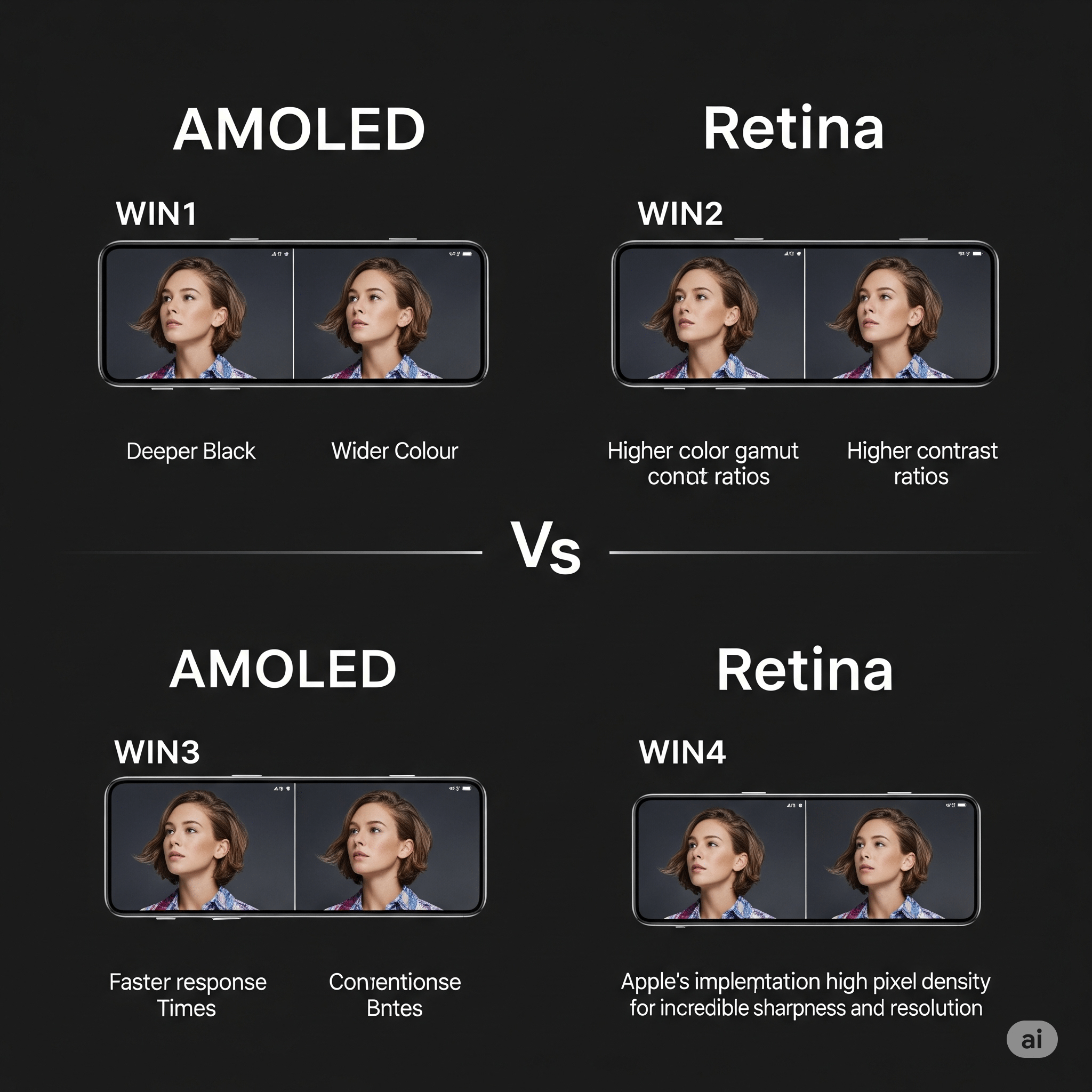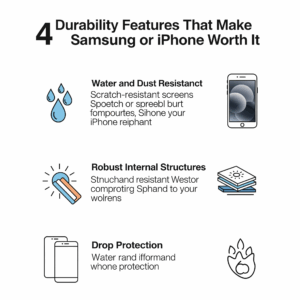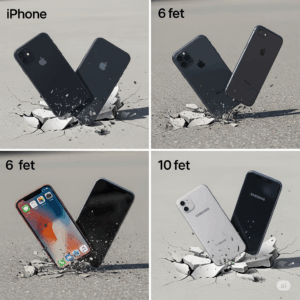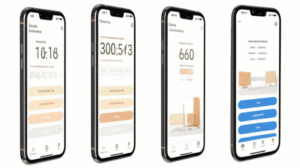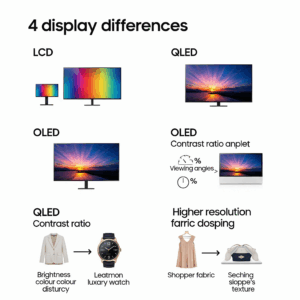In 2025, display technology remains one of the most critical factors for smartphone shoppers. Whether they’re streaming, gaming, or shopping on mobile, users demand sharp, vibrant visuals—and Apple’s Retina displays and Samsung’s AMOLED panels continue to lead the charge.
For Shopify eCommerce merchants, understanding these display differences can help you craft better product listings, enhance mobile UX, and target your ideal customer with more precision.
Here are 4 display tech wins that define the AMOLED vs. Retina showdown, and how each one affects your Shopify store’s growth potential.
1. Color Vibrancy & Contrast
Samsung’s AMOLED displays are known for deep blacks and bold colors. With individual pixels turning completely off for black tones, AMOLED offers true contrast ratios and cinematic visuals—perfect for media-heavy use.
Apple’s Super Retina XDR, while still vibrant, leans toward color accuracy and realism. It uses advanced OLED technology fine-tuned for lifelike skin tones, soft shadows, and smooth gradients.
Shopify insight: If your store sells visual content (like wallpapers, themes, or screen protectors), tailor your previews to each display’s strengths. Use Shopify’s dynamic media tools to showcase true-to-device previews. Get started here.
2. Brightness and Outdoor Visibility
Samsung’s latest Galaxy S25 series reaches up to 2,800 nits peak brightness, making it the top choice for users in sunny environments. AMOLED displays adjust dynamically, offering excellent readability without overheating.
Apple’s iPhone 17 Pro Max hits 2,500 nits in HDR content and delivers consistent brightness across the entire screen, with better adaptive tone mapping for natural visuals.
If you sell anti-glare screen protectors or outdoor mobile accessories on Shopify, use these brightness stats to target messaging to photographers, outdoor workers, or travelers.
3. Refresh Rate and Motion Smoothness
Both Samsung and Apple offer 120Hz refresh rates, but Samsung’s LTPO AMOLED technology dynamically adjusts from 1Hz to 120Hz for better battery efficiency.
Apple’s ProMotion feature is equally responsive, but slightly more conservative in how it ramps between refresh rates. Gamers may notice smoother performance on Galaxy Ultra models, especially during high-motion content.
If your Shopify niche includes gaming accessories or controllers, highlight refresh rate benefits by device. Product descriptions that match user expectations reduce bounce and boost trust.
4. Durability and Screen Curvature
Apple’s flat-edge Retina screens are reinforced with Ceramic Shield glass, offering excellent durability for standard screen protectors and edge-to-edge designs.
Samsung’s curved AMOLED panels provide an immersive look but may limit compatibility with certain accessories. However, they now feature Gorilla Glass Victus 3, improving drop resistance.
Shopify tip: Offer curved or flat-compatible accessories, and segment your catalog by screen shape. Shopify’s product filtering tools make it easy to organize by device and display type for faster conversions.
Final Thoughts: Which Display Wins?
There’s no universal “best” display—only the best display for the customer’s lifestyle. Samsung’s AMOLED excels in vibrancy, motion, and outdoor brightness. Apple’s Retina display focuses on balance, color accuracy, and long-term comfort.
As a Shopify store owner, use these insights to:
Optimize product listings for different devices.
Use media that reflects actual screen characteristics.
Position your accessories or digital products with device-specific value props.
Ready to start or scale your mobile-focused business? Explore Shopify today and turn display differences into conversion advantages.
